Type meat course | ||
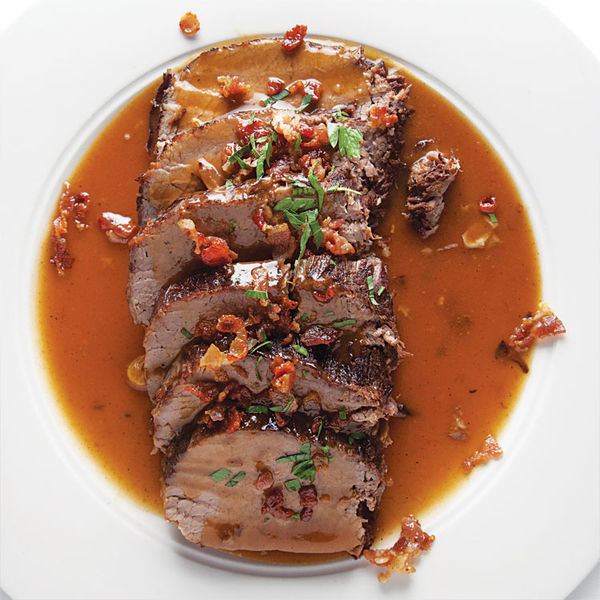 | ||
Region or state throughout Germany and German-speaking regions. Main ingredients Similar Rouladen, Spätzle, Raspeball, Red cabbage, Knödel | ||
Sauerbraten (German: "sour roast" from sauer for "sour" or "pickled" and Braten for "roast meat") is a German pot roast that can be prepared with a variety of meats—most often beef, but also from venison, lamb, mutton, pork, and traditionally, horse. Before cooking, the cut of meat is marinated for several days (recipes vary from three to ten days) in a mixture of vinegar or wine, water, herbs, spices, and seasonings. Since usually tougher cuts of meat (like rump roast, or bottom round of beef) are used for Sauerbraten, the longer marinating of the meat acts to tenderize it, resulting in a finished dish that is tender, soft, and juicy. The ingredients of the marinade vary based on regional styles and traditions throughout Germany.
Contents
- Uwe boll talks sauerbraten 1
- History
- Regional variations
- Selection of the roast
- Marinating the roast
- Cooking the roast
- Preparing the gravy
- Other
- References
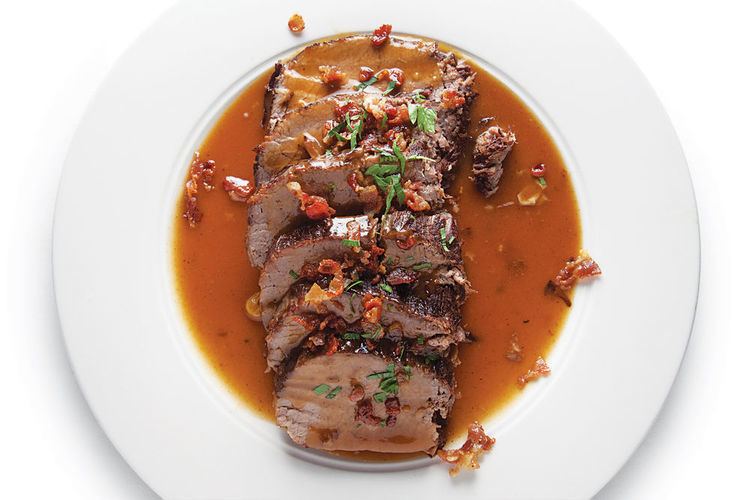
Sauerbraten is regarded as one of the national dishes of Germany. It is one of the best-known German dishes, and is frequently found on the menus of German-style restaurants outside Germany. Several regional variations on the dish include those from Franconia, Thuringia, Rhineland, Saarland, Silesia, and Swabia. In a few parts of Germany potato pancakes (either Kartoffelpuffer or Reibekuchen) are served with sauerbraten; many German-style restaurants in the US do this.
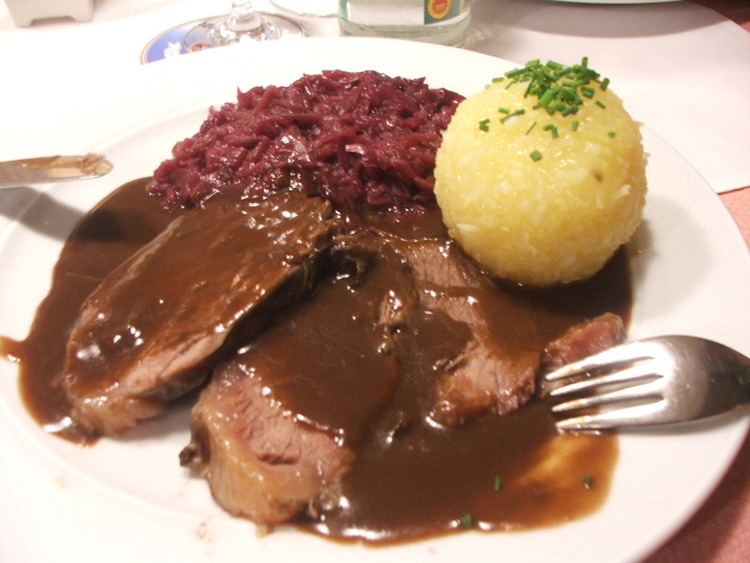
Sauerbraten is traditionally served with traditional German side dishes, such as Rotkohl (red cabbage), Knödel or Kartoffelklöße (potato dumplings), Spätzle (an egg and flour noodle), and boiled potatoes.
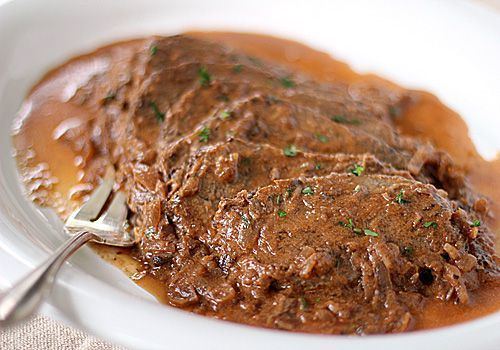
Uwe boll talks sauerbraten 1
History
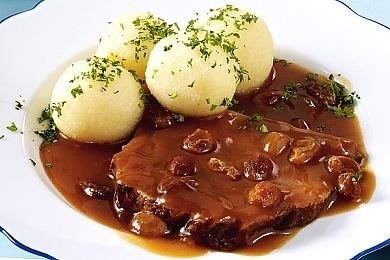
Julius Caesar has been assigned a role in the inspiration for sauerbraten as he sent amphoras filled with beef marinated in wine over the Alps to the newly founded Roman colony of Cologne. According to this legend (Julius Caesar was murdered in 44 BC and the Roman city of Cologne was founded in 50 AD), this inspired the residents of Cologne to imitate the Roman import. While quite common, these claims are largely unsubstantiated.
Several sources believe sauerbraten was invented by Charlemagne in the ninth century AD as a means of using leftover roasted meat. Saint Albertus Magnus, also known as Saint Albert the Great and Albert of Cologne, is also credited with popularizing the dish in the thirteenth century.
Sauerbraten was originally made from horse meat; this is still done by many traditional restaurants, particularly in the Rhineland, but today sauerbraten is most often made from beef.
Regional variations
There are many regional variants of sauerbraten. Many of the variations are in the ingredients used for the marinade in which the cut of meat is immersed for several days before cooking.
Generally, the marinade's base is either red wine, vinegar or a combination of both. While Germany largely produces white wines such as Riesling and Gewürztraminer, regions of Germany that are closer to France often use red wine as the base for the marinade. Wine vinegar, apple cider vinegar and other varieties can be used as a base. Recipes from eastern regions of Germany closer to Poland and the Czech Republic tend to use vinegar as the base more frequently. In many regions, wine and vinegar are used together.
Selection of the roast
Sauerbraten can be made with many different kinds of roasting meat. Tougher, less expensive cuts of meat are used—typically a rump roast or bottom round of beef.
Venison or other game are often prepared as sauerbraten as the spices and vinegar take away the gamey taste of the meat.
Marinating the roast
A solid cut from the bottom round or rump is marinated for three or four days, or as many as 10, before cooking.
Red wine vinegar and wine typically form the basis of the marinade, which also includes earthy aromatic spices such as peppercorns, juniper berries, cloves, nutmeg, and bay leaves and less commonly coriander, mustard seed, cinnamon, mace, ginger, and thyme. The marinade may also include vegetables such as onions, celery, and carrots. The acidic marinade helps tenderize the meat (which is typically a tougher cut) before it cooks. Buttermilk is also used as a marinade in certain regional varieties.
It is frequently advised to marinate the meat in an earthenware, glass, plastic, or enamel container rather than one made of bare metal, as the acidic marinade would react with a metal vessel during the extended marinating.
Cooking the roast
After the meat is removed from the marinade and dried, it is first browned in oil or lard and then braised with the strained marinade in a covered dish in a medium oven or on the stovetop. After simmering for four hours or more, depending on the size of the roast, the marinade will continue to flavor the roast and, as the meat cooks, its juices will also be released resulting in a very tender roast.
Preparing the gravy
After the roast is cooked, the marinade is strained and returned to a saucepan where it is thickened (often with crushed gingerbread, lebkuchen, or gingersnaps, flour, sour cream, brown sugar, and/or roux) which add body and flavor to the sauce. Before it closed in 1982, Luchow's German restaurant in New York City used crushed gingersnap cookies to season and thicken the gravy of its sauerbraten, one of the favored dishes. This style was made popular in the U.S. after the publication of “Luchow's German Cookbook: The Story and the Favorite Dishes of America's Most Famous German Restaurant” by Jan Mitchell in 1952.
Other
Packaged sauerbraten seasonings are available. Cooked sauerbraten in marinade is sold in some supermarkets.
While sauerbraten is most traditionally eaten with beer, it does pair well with the following wine varietals: Burgundy, Cabernet Franc, Cabernet Sauvignon, Gewürztraminer, Pinot noir, Riesling, and Syrah.
